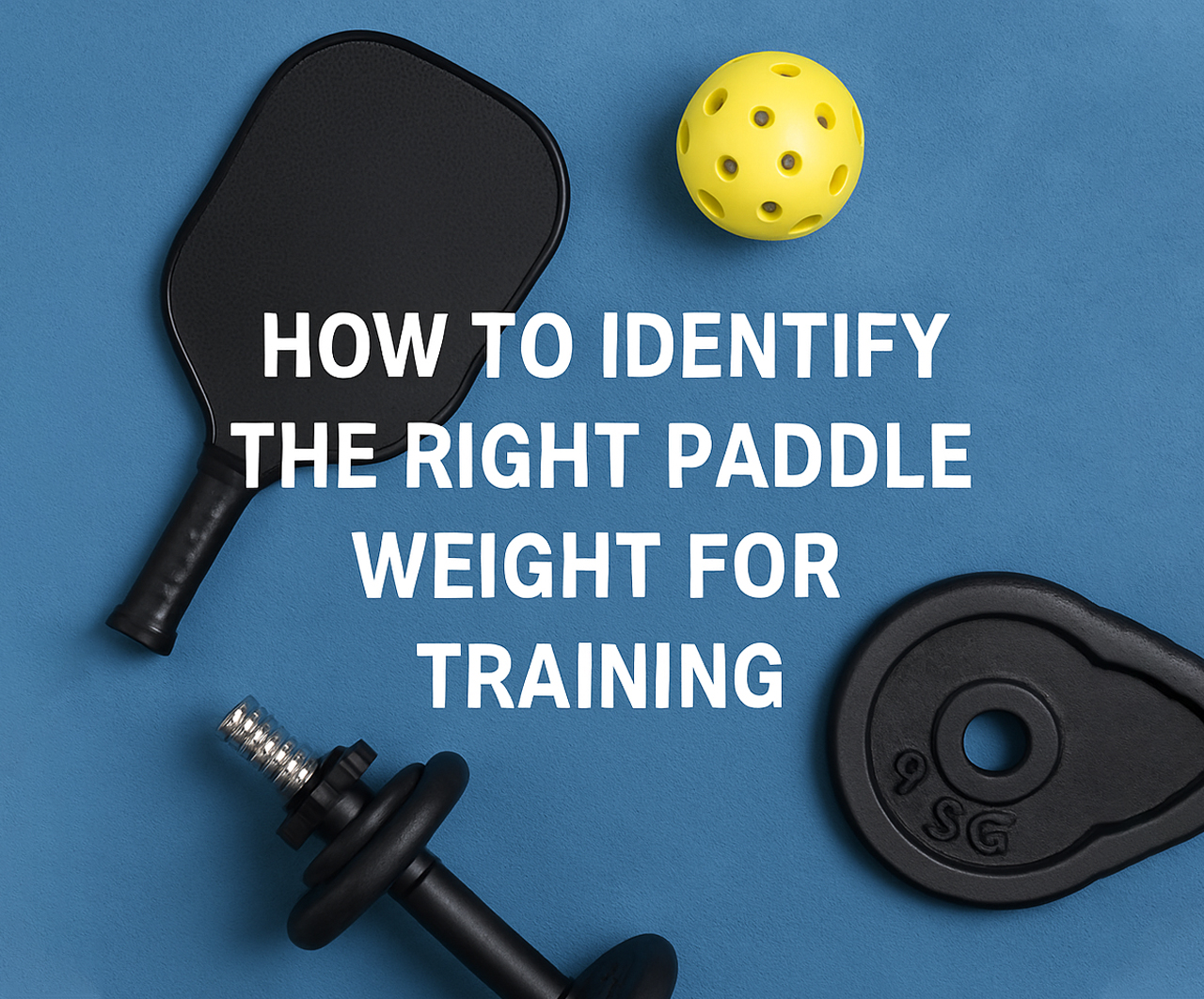Selecting the right paddle weight is a crucial factor in improving performance and endurance during pickleball training. Whether you’re a beginner looking to develop fundamental skills or an advanced player refining your technique, using the right paddle weight can enhance control, power, and maneuverability. Many athletes consult pickleball manufacturers to find the perfect fit, while some choose to design your own pickleball paddle for a tailored experience. Additionally, training with personalized pickleball paddle can help players refine their accuracy and consistency. In this guide, we will explore how to determine the right paddle weight for training and its impact on your overall performance. Know more..
Understanding Paddle Weight Categories
Pickleball paddles generally fall into three weight categories: lightweight, midweight, and heavyweight. Each weight class provides distinct benefits depending on playing style and training goals.
1. Lightweight Paddles (6.5 – 7.5 oz)
- Best for: Control, quick reactions, and finesse shots.
- Pros: Easier to maneuver, reduces wrist fatigue, ideal for dinking.
- Cons: Requires more effort to generate power.
2. Midweight Paddles (7.6 – 8.4 oz)
- Best for: Balanced play, combining power and control.
- Pros: Offers versatility, suits most players.
- Cons: May not be as specialized for extreme control or power.
3. Heavyweight Paddles (8.5+ oz)
- Best for: Power shots, drives, and aggressive play.
- Pros: Generates more force with less effort, reduces vibration.
- Cons: Can cause arm fatigue with prolonged use.
How Paddle Weight Affects Training
The weight of a paddle influences reaction speed, endurance, and shot execution. Working with pickleball manufacturers can help players identify the ideal paddle weight based on their goals.
Impact on Control and Accuracy
- Lighter paddles provide better wrist control for finesse shots.
- Heavier paddles stabilize swings and reduce off-center hits.
Influence on Power and Speed
- Heavy paddles enhance shot velocity but reduce reaction time.
- Light paddles improve agility but require more effort to generate force.
Effect on Endurance
- A paddle that is too heavy can cause muscle fatigue over long training sessions.
- A midweight paddle is often ideal for extended practice.
How to Choose the Right Paddle Weight for Training
1. Assess Your Playing Style
- Control-Oriented Players: Opt for lightweight paddles for better maneuverability.
- Power Players: Choose heavier paddles to maximize force.
- All-Round Players: A midweight paddle provides a balance of control and strength.
2. Consider Your Strength and Endurance
- If you experience wrist fatigue, a lighter paddle may be better.
- Stronger players may benefit from heavyweight paddles for increased power.
3. Test Different Weights
- Borrow or demo paddles of different weights before purchasing.
- Some pickleball manufacturers offer trial periods to help players find the best fit.
4. Adjust Based on Training Goals
- If working on precision, a lightweight paddle is recommended.
- For strength-building, training with a heavier paddle can be beneficial.
Benefits of Customizing Paddle Weight
Personalized Training Experience
Players who design your own pickleball paddle can customize weight distribution for better comfort and efficiency.
Injury Prevention
Selecting the correct paddle weight reduces strain on joints and minimizes injury risk.
Improved Adaptability
Training with different weights prepares players for various match scenarios and conditions.
How Personalized Pickleball Balls Can Improve Training
Training with personalized pickleball balls can further enhance skill development. These customized balls allow players to practice with specific textures, weights, and colors for improved visibility and control.
Benefits of Using Personalized Pickleball Balls:
- Provides consistency in practice.
- Helps players track ball movement and spin.
- Offers better durability compared to standard balls.
Practical Drills for Training with Different Paddle Weights
To fully maximize training benefits, players can engage in specific drills using different paddle weights.
1. Wrist Strengthening Drill
- Hold a heavyweight paddle and perform controlled wrist curls.
- Repeat 3 sets of 15 reps for increased wrist endurance.
2. Control and Accuracy Drill
- Use a lightweight paddle to practice dinks and drop shots.
- Aim for precision and soft landings in the opponent’s kitchen.
3. Power Shot Drill
- Train with a heavier paddle for 10-15 minutes focusing on baseline drives.
- Switch back to a midweight paddle and observe increased shot speed.
4. Speed Reaction Drill
- Use a lightweight paddle for rapid volley exchanges at the net.
- Work on quick reflexes while maintaining accuracy.
Common Mistakes When Selecting Paddle Weight
1. Choosing a Paddle Based on Others’ Preferences
- Just because a paddle works for someone else doesn’t mean it’s the best for you.
- Always test different weights before purchasing.
2. Ignoring Wrist and Arm Fatigue
- A paddle that is too heavy can cause strain over time.
- If you experience discomfort, opt for a lighter paddle.
3. Overlooking Balance and Feel
- Some paddles distribute weight differently (head-heavy vs. balanced).
- Work with pickleball manufacturers to find the right balance for your playing style.
4. Using the Same Paddle for All Training Drills
- Varying paddle weight can help develop different aspects of your game.
- Incorporate a mix of lightweight and heavyweight paddles into training sessions.
How to Transition Between Paddle Weights
If you’re shifting from one weight category to another, gradual adaptation is key.
Step-by-Step Transition Plan:
- Week 1: Use a heavier paddle for warm-up drills, then switch back to your usual weight.
- Week 2: Increase the duration of heavier paddle use in drills and short matches.
- Week 3: Alternate between different paddle weights during full games.
- Week 4: Determine which weight best suits your playstyle and training needs.
Conclusion
Selecting the right paddle weight is essential for optimizing training and preventing fatigue. Whether consulting pickleball manufacturers, choosing to design your own pickleball paddle, or incorporating personalized pickleball balls into practice sessions, customization plays a key role in performance improvement. Understanding your playing style, testing different weights, and adjusting based on training goals will ensure the best results on the court. With the right paddle weight, players can maximize control, power, and endurance, making each training session more effective and rewarding. By implementing proper drills and avoiding common mistakes, you can elevate your game and build the strength needed for competitive play.

